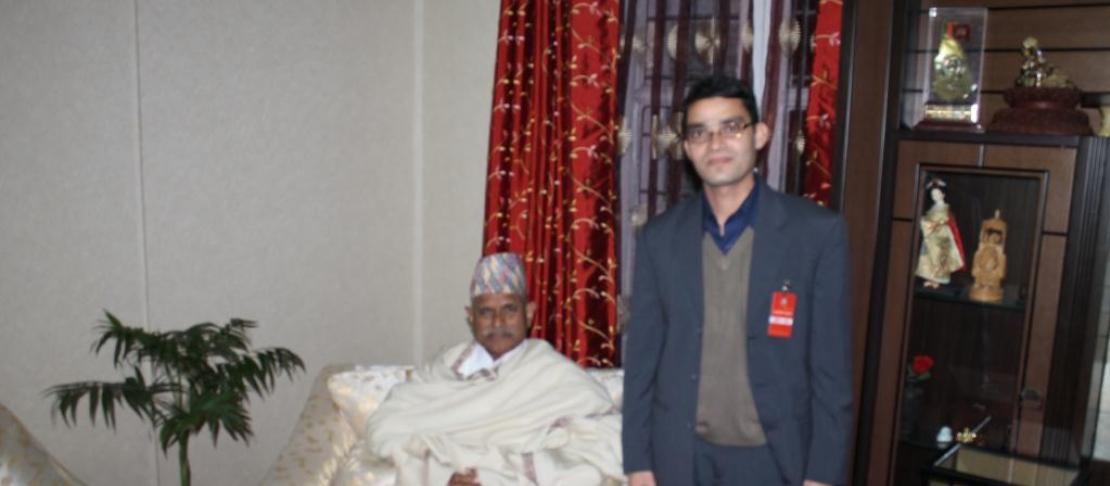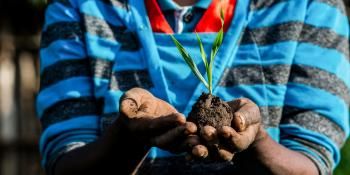Science Officer Gopal Bhatta talks to the President of Nepal about climate-smart agriculture

Science Officer for CCAFS Indo-Gangetic Plains Dr. Gopal Datt Bhatta recently met with his Excellency the President of Nepal, Dr. Rambaran Yadav for an interesting conversation about CCAFS activities in Nepal. Here is a blog post about the meeting, written by Gopal Datt Bhatta.
In December of last year I got the opportunity to meet with the President of Nepal to tell him about CCAFS and our activities in the Indo-Gangetic Plains. Dr Rambaran Yadav really wanted to know more in detail of each intervention that are being implemented, especially in his own home country Nepal. I therefore mentioned different projects that are being undertaken and particularly emphasized climate smart village activities and what CCAFS aims to obtain with these models. Interestingly, His Excellency interconnected each and every activities of CCAFS climate smart village model with his childhood experiences. He gave lots of examples of what is happening in the nature and particularly in the terai and hill areas of Nepal. He observed: ‘’Some two or three decades before, the terai area used to have clear sky and luminous winter but now winter is very gloomy and there is no sign of sunshine throughout most of the winter season. This has resulted in several deaths in terai in recent years".
Deforestation is a big problem in Nepal
The President felt that this environmental change was not only due to improper farming practices in the terai areas but also due to increased farming in the marginal lands of the terai and rapidly increasing forest clearing across entire Churia hills. He also stated that “Downstream farming is affected mostly due to unwanted activities that are being undertaken across Churia hills”. According to him, deforestation is taking place at a rapid pace making it high time to do something about it. “The forests have the potential to earn substantially more from carbon offsetting if they are left intact and people could earn money through new plantation. This, on the one hand, mitigates climate change and on the other hand, could be a potential source of income. And the scope of carbon trading is huge in Nepal’s hills” he explained. He suggested that climate change adaptation and mitigation strategies be implemented first in the hilly areas of Nepal if both terai and hill people are to become food secure and climate resilient. The President therefore suggested that international organisations that work with these issues should develop their strategy in a holistic manner so that both upstream and downstream inhabitants are made food secure and their resources conserved.
At the end of our conversation I informed Dr. Yadav that a Science-Policy Interface program is being scheduled in the end of April in Kathmandu and CCAFS hopes that the President will attend as a chief guest. The President assured me that he would mobilise related policymakers for the meeting and indicated that he will be looking forward to talk with CCAFS team in Kathmandu.


